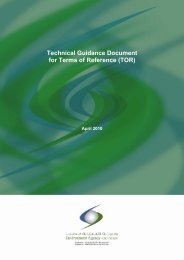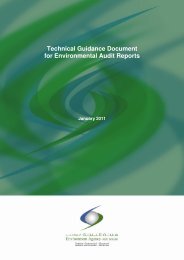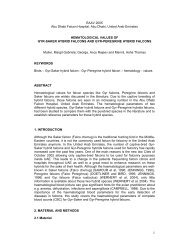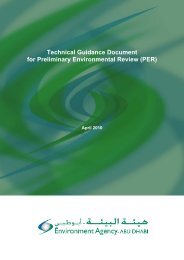The ERWDA Herbarium
The ERWDA Herbarium
The ERWDA Herbarium
Create successful ePaper yourself
Turn your PDF publications into a flip-book with our unique Google optimized e-Paper software.
also maintain a herbarium. In this manner,<br />
we are able to exchange information and<br />
plant specimens, and therefore use the limited<br />
financial and manpower resources at<br />
our disposal more efficiently to achieve our<br />
specific objectives.<br />
5.2. Pressing and drying of specimens<br />
On returning to the laboratory, the specimens<br />
are carefully pressed between<br />
sheets of newspaper in a plant press (see<br />
Fig. 3). It is advisable to put sheets of blotting<br />
paper and cardboard between the<br />
plants to ensure that air can circulate effectively,<br />
and the specimens dry reasonably<br />
quickly. This also limits the risk of fungal<br />
attack. Drying is best performed at temperatures<br />
between about 30 °C and 40 °C,<br />
and takes up to two to three weeks. Rapid<br />
drying at high temperatures in an oven is<br />
still fresh may result in them becoming<br />
stewed.<br />
5.3. Mounting<br />
Once pressed and dried, the plant specimens<br />
are mounted with labels on special<br />
archival 11x17 inch paper. <strong>The</strong> mounting<br />
process involves careful work with attention<br />
to detail, to ensure that all identifying<br />
characteristics are highlighted. A mounted<br />
herbarium specimen is shown in Fig. 4.<br />
Each herbarium sheet is furnished with a<br />
label (Fig. 5) which gives precise information<br />
on the name of the species, collection<br />
locality, habitat, date of collection, along<br />
with some brief ecological data. In addition,<br />
Fig. 3. <strong>Herbarium</strong> press.<br />
not recommended, as it can lead to specimens<br />
becoming too brittle. High temperatures<br />
applied to the plants when they are<br />
Fig. 4. Typical herbarium sheet with Reseda<br />
aucheri. <strong>The</strong> label in the bottom right-hand corner<br />
gives important details on the plant (see<br />
Fig. 5).<br />
- 6 -

















